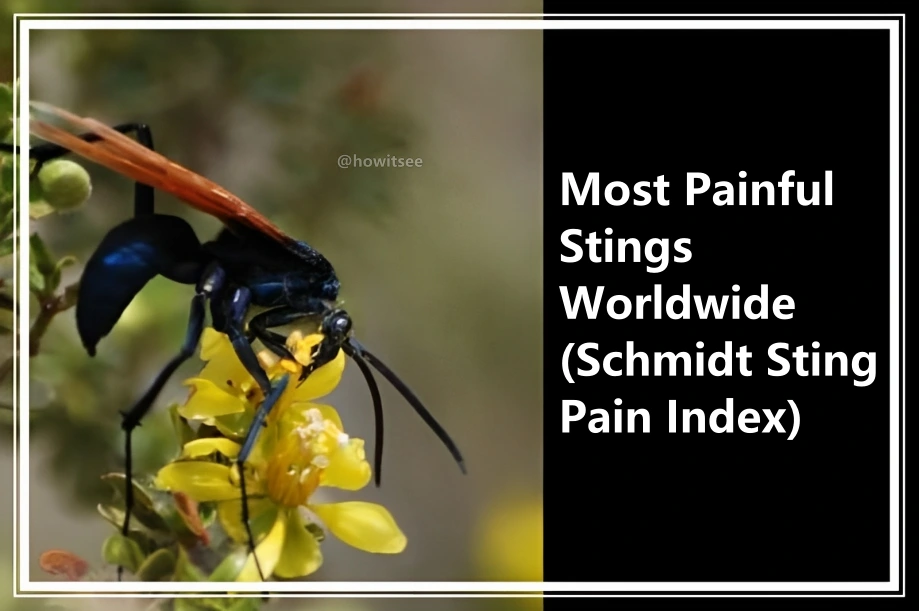Every species in the world possesses certain defense mechanisms that protect them from predator invasions. From claws to sharp teeth, from horns to stingers, we get to see a diverse list of them in the animal kingdom. Every human on this earth must have been stung or bitten by an insect at some point in his life.
Often, it causes redness with severe itching or pain, but in some cases, it may cause severe allergic reactions and may prove fatal. From the endless list of insects, it is a common query among the general mass as to which insect has the most painful sting.
To answer this, we bring you a ranked list of the Top 15 Most Painful Stings in the world. The ranking has been made based on their rating on the Schmidt’s Pain Index.
Top 15 Most Painful Stings Worldwide
15) Hairy Panther Ant
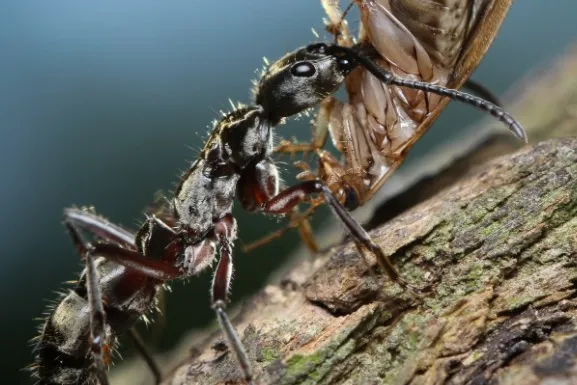
| Genus | Neoponera |
| Scientific Name | Neoponera villosa |
| Size | 0.6-1.9 cm |
| Pain Index (Level) | 2 |
| Geographic Location | North America |
The Giant Hunting Ant, also known as the Hairy Panther Ant, is an active hunting species of ant. Usually found in trees, in the canopy layer. This ant has quite a large stinger, with which it can deliver a painful sting.
The Giant Hunting Ant has a Schmidt’s Pain Index of 2, and the pain may last anywhere between 5-10 minutes. They usually make their colonies on the ground or on decaying logs.
14) Mexican Honey Wasp
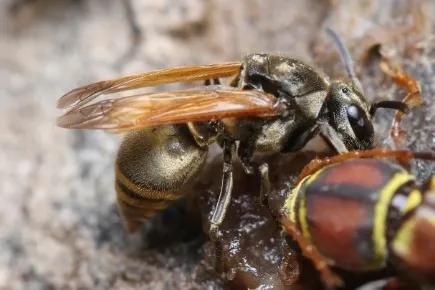
| Genus | Brachygastra |
| Scientific Name | Brachygastra mellifica |
| Size | 0.7-0.9 cm |
| Pain Index (Level) | 2 |
| Geographic Location | northern Panama through most of subtropical Central America and Mexico |
Next up on our list of Most Painful Stings in the World, we have the Mexican Honey Wasp, with a pain Index of 2. Known to cause pain for nearly 5 minutes, the sting of the Mexican Honey Wasp is quite painful.
These wasps generally are in the size range of 7-9 mm, and only the females have stinging organs. The Mexican Honey Wasp, as the name suggests, is among the very few wasp species known to produce honey.
13) Asian Giant Hornet
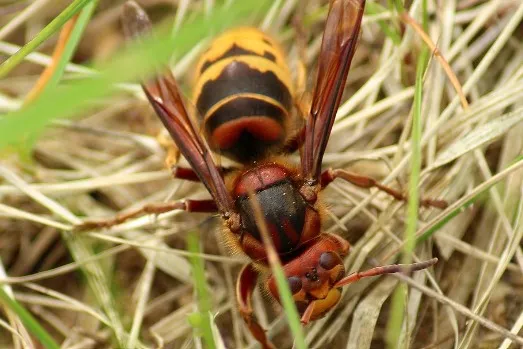
| Genus | Vespa |
| Scientific Name | Vespa Mandarinia |
| Size | 0.6-0.8 cm |
| Pain Index (Level) | 2 |
| Geographic Location | tropical East Asia, South Asia, Mainland Southeast Asia |
The following insect on our list with an excruciating sting is the Asian Giant Hornet, the largest hornet in the world. These species generally occur in the range of 1.5-2 in (45- 52 mm) and 6-8 mm long stinger.
The sting causes pain and injects toxic venom, which is neurotoxic. Though a single sting may not be lethal, multiple stings may be enough to cause death.
12) Bulldog Ant
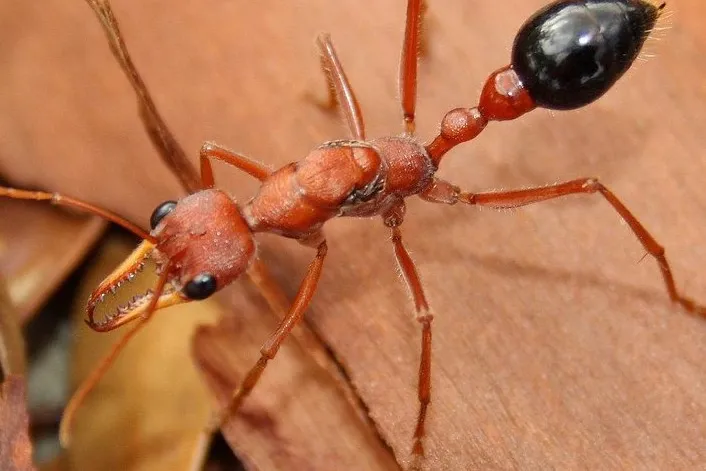
| Genus | Myrmecia |
| Scientific Name | Myrmecia sp. |
| Size | 0.8-4 cm |
| Pain Index (level) | 2 |
| Geographic Location | Australia |
The Bulldog ants are widely famous for their excruciating stings and venom, which is counted among the most toxic venoms in the arthropod world.
The sting of these ants finds a Schmidt’s Index rating of 2 and is described as intense and sharp. Their sizes vary in the range of 8 to 40 mm, with some being among the largest ants in the world.
11) Trap-Jaw Ant
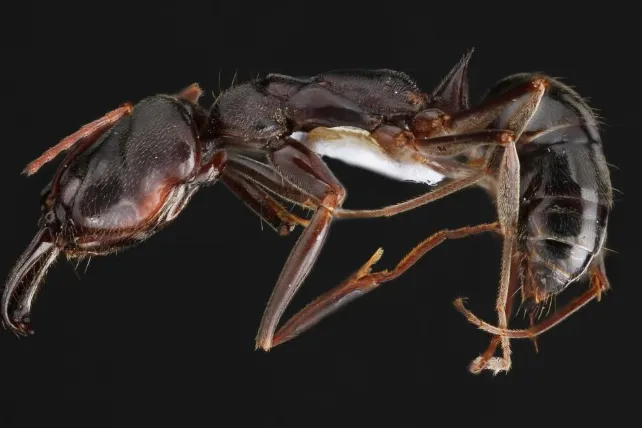
| Genus | Odontomachus |
| Scientific Name | Odontomachus sp. |
| Size | more than 1.5 cm |
| Pain Index (Level) | 2.5 |
| Geographic Location | Worldwide, in the tropics and sub-tropical areas |
The Trap Jaw ants are popular for their large mandibles, which deliver a potent bite. Schmidt describes the pain to be excruciating, like the snapping of a rat trap on the fingernail.
These ants are predatory and can deliver a sting apart from their powerful bite. The pain may last anywhere between 6-10 minutes.
10) Western Yellow Jacket Wasp
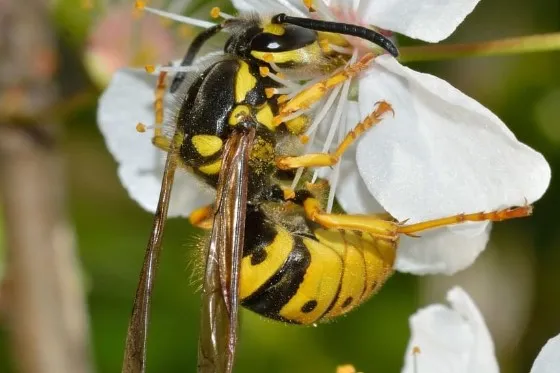
| Genus | Vespula |
| Scientific Name | Vespula pensylvanica |
| Size | 1-1.6 cm |
| Pain Index (Level) | 2.5 |
| Geographic Location | across the western half of North America |
Next up on our list of Most Painful Stings in the world, we have a predatory wasp species, the Western Yellow Jacket.
Described as hot and smoky, almost like extinguishing a burning cigar on the skin, the sting of this wasp species has a rating of 2.5 on the Pain Index.
The pain may last for nearly 10 minutes or more. Western Yellow Jackets are almost 14 mm long, with the Queens being slightly larger.
9) Fire Ant
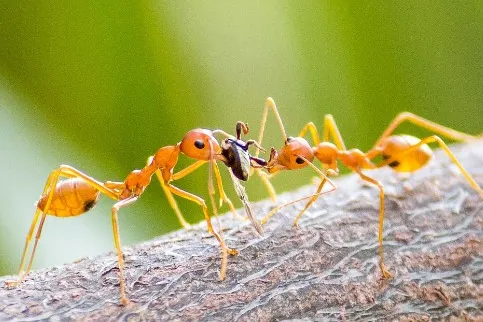
| Genus | Solenopsis |
| Scientific Name | Solenopsis sp. |
| Size | 0.2-0.5 cm |
| Pain Index (Level) | 2.5 |
| Geographic Location | Florida, Georgia, South Carolina, Louisiana, Mississippi, Alabama, and parts of North Carolina, Virginia, Tennessee, Arkansas, Texas, Oklahoma, New Mexico, and California |
When on a trip to a rainforest, it’s not the wild animals that you must be afraid of. Instead, it’s these tiny arthropods, the fire ants, which can bring you to your deathbed. They have a venom-injecting sting coupled with strong mandibles that can deliver a powerful bite.
Fire ant’s bite may cause redness and itching in the area, which at times might lead to severe allergic reactions like chest pain and nausea, which can be fatal if left untreated.
8) Asian Honey Bee
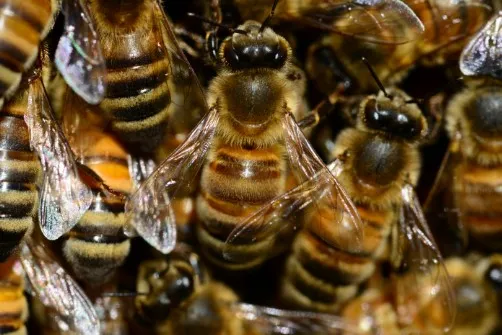
| Genus | Apis |
| Scientific Name | Apis cerana |
| Size | 1-1.1 cm |
| Pain Index (Level) | 2.5 |
| Geographic Location | Native to South, East, and Southeast Asia |
The Asian Honey Bee is one of the most common bees found in South Asia. These bees generally are 10-11 mm in length.
The Asian Honey Bee is known for its painful sting, which has a rating of 2.5 on the Schmidt’s Pain Index. The sting causes pain, itching, and swelling in the area that may persist for a couple of hours.
7) Maricopa Harvester Ant
| Genus | Pogonomyrmex |
| Scientific Name | Pogonomyrmex Maricopa |
| Size | 0.5-0.9 cm |
| Pain Index (Level) | 3 |
| Geographic Location | North American states of California, Colorado, Arizona, etc. |
Now we have an insect whose venom is the most toxic venom among all insects in the world, the Maricopa Harvester Ant. Schmidt rates the pain of this insect at three and may last for a couple of hours.
The bite of a Maricopa Harvester Ant is not only immensely painful but also highly toxic. These ants hold the prey by their mandibles and continue to sting 12 times which can easily kill a 2 kg rat.
6) Metricus Paper Wasp
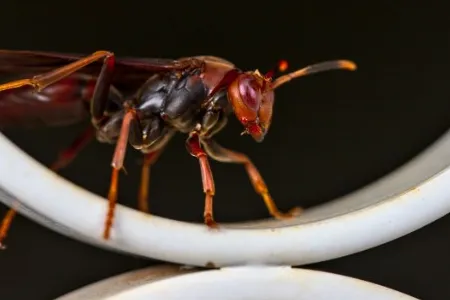
| Genus | Polistes |
| Scientific Name | Polistes metricus |
| Size | 2-3.5 cm |
| Pain Index (Level) | 3 |
| Geographic Location | native to North America |
On the 6th position, with the Schmidt’s Pain Index of 3, we have the Metricus Paper Wasp. You can identify this insect with its characteristic black abdomen and reddish-brown thorax region.
It’s a large wasp species with an average body length of 20- 35 mm (0.78-1.37 in). The pain of its sting is highly painful and may last up to 3-4 minutes.
5) Red Paper Wasp
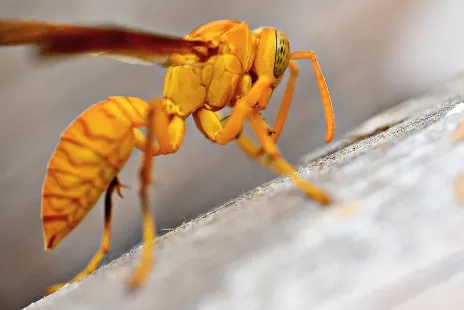
| Genus | Polistes |
| Scientific Name | Polistes carolina |
| Size | 1.8-2.4 cm |
| Pain Index (Level) | 3 |
| Geographic Location | Eastern United States |
Next up on our list of Most Painful Stings in the world, we have the sting of the red Paper Wasp. With the Schmidt’s Pain Index of 3, the pain is comparable to a drop of superheated oil on the arm.
This wasp species gets its name from its rust-colored body. The Red Paper Wasp belongs to the category of large wasps and has a wing length of nearly 18-24 mm.
4) Red Velvet Ant
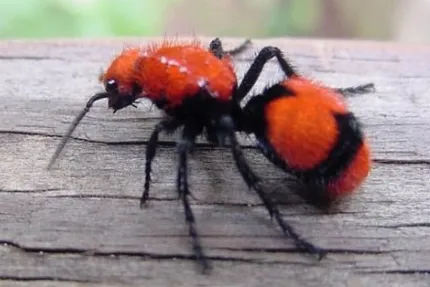
| Genus | Dasymutilla |
| Scientific Name | Dasymutilla occidentalis |
| Size | 1.5-1.9 cm |
| Pain Index (Level) | 3 |
| Geographic Location | eastern United States |
Often confused with ants, the name Velvet Ant is a misnomer in the biological world. Known for its highly painful sting, which has a rating of 3 on the Schmidt’s Pain Index, the Velvet Ants are wasps.
The females of this species are considered more dangerous for their sting, thereby giving this species its nickname, Cow Killer. They get their name from the dense velvet-like hair that covers their body.
3) Warrior Wasp
| Genus | Synoeca |
| Scientific Name | Synoeca cyanae |
| Size | 1.5-2 cm |
| Pain Index (Level) | 4.0 |
| Geographic Location | North and Central America, Northern South America, Mexico |
Now, it’s time to step into the Schmidt’s Pain Index of 4, with the Warrior Wasp occupying the third position in our list of Most Painful Stings in the world. Schmidt describes the sting of a Warrior Wasp as torturous, as if tied to the opening of an active volcano.
These wasps are medium-sized wasps with an average body length of nearly 0.80 in and are often dark in color. In case of a Warrior Wasp sting, make sure you get immediate medical attention. The pain may last for as long as 2 hours.
2) Tarantula Hawk Wasp
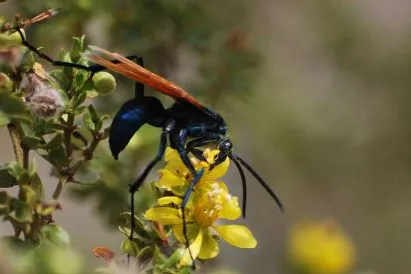
| Genus | Hemipepsis |
| Scientific Name | Hemipepsis sp. |
| Size | 8-11 cm |
| Pain Index (Level) | 4.0 |
| Geographic Location | Worldwide in the tropical areas |
A large wasp genus with an immensely painful sting has given a Pain Index Rating of 4. The Tarantula Hawk can grow up to 11 cm in length and gets its name from its Tarantula hunting skills.
Schmidt describes the pain to be blinding and electrifying, thereby making it the second most painful sting in the world. Though the pain is immense, the sting of a Hawk wasp is not life-threatening. The pain may last for 5-10 minutes.
1) Bullet Ant
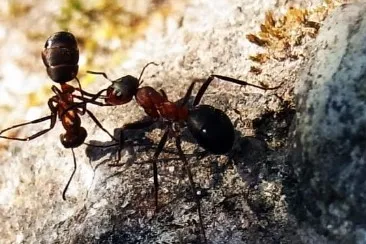
| Genus | Paraponera |
| Scientific Name | Paraponera clavata |
| Size | 3.5-3.8 cm |
| Pain Index (Level) | 4.0 |
| Geographic Location | Central and South American Rainforests |
Bullet Ants possess the most painful sting in the world and are comparable to walking over burning charcoal with a nail inserted into the heel. These ants are nearly 0.7-1.2 in long and are predatory.
The sting has a 4.0+ rating on the Schmidt’s Pain Index and is neurotoxic, containing the peptide, Poneratoxin, capable of ceasing nerve impulse transmission in the body.
Special Mention
Executioner Wasp
| Genus | Polistes |
| Scientific Name | Polistes carnifex |
| Size | 2.4-3.3 cm |
| Pain Index (Level) | Unknown (estimated 4.0+) |
| Geographic Location | Central and South America |
Currently, it is claimed by Coyote Peterson that Executioner Wasp has the most painful and venomous sting in the world, surpassing both bullet ant and the Japanese giant hornet.
Also, it is believed that when threatened, this wasp has the capability to deliver a painful sting of 4.0+ (greater than a bullet ant’s sting) on the Schmidt pain index.
Here, we conclude our list of the Top 15 Most Painful Stings in the world. We intend to bring more such informative write-ups shortly. We will be back with new posts. So, until then, stay tuned.
Reference:
The Schmidt’s Pain Index by nhm.ac.uk
Also Read:

Meet Monty, the visionary founder of How It See, being an engineering student, he’s fueled by an insatiable curiosity about the world around him. He is captivated by an eclectic correlation between animal groups, science, and nature, and this fascination drives his quest for understanding.
After completing his degree, he’s set on a mission to delve deep into the realm of nature, accumulating knowledge to share with you through his writing. In the meantime, he loves to watch anime and read anime.
